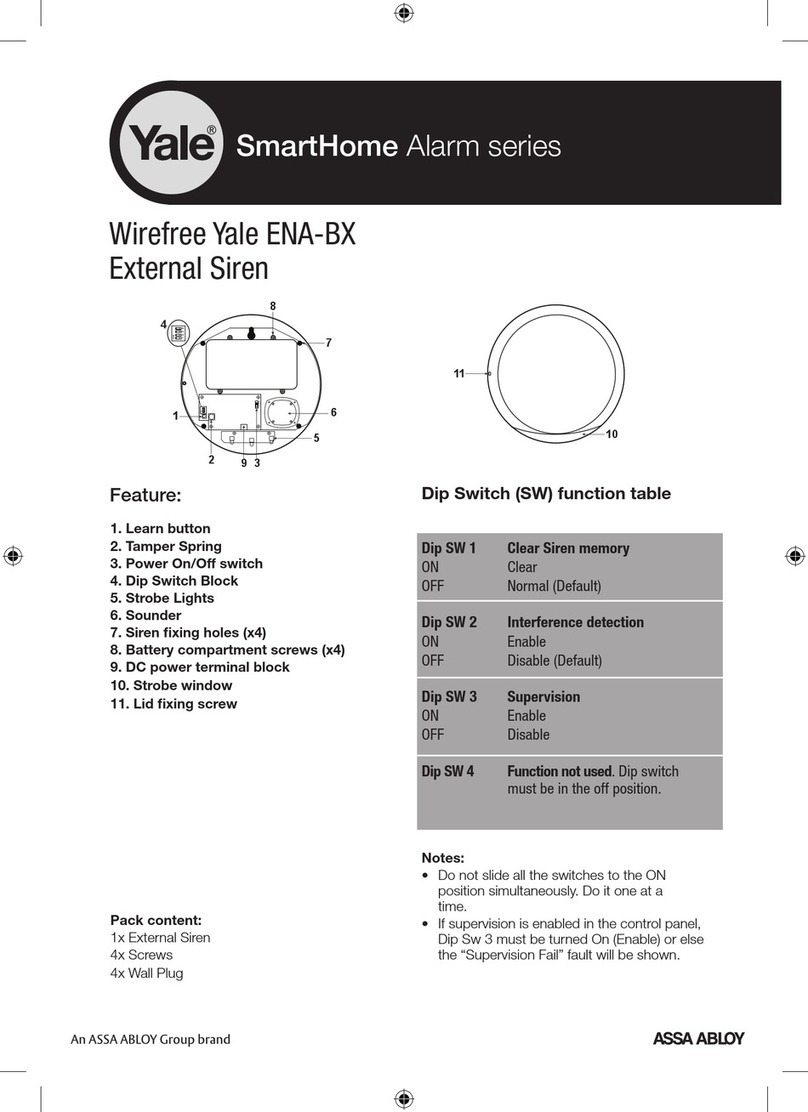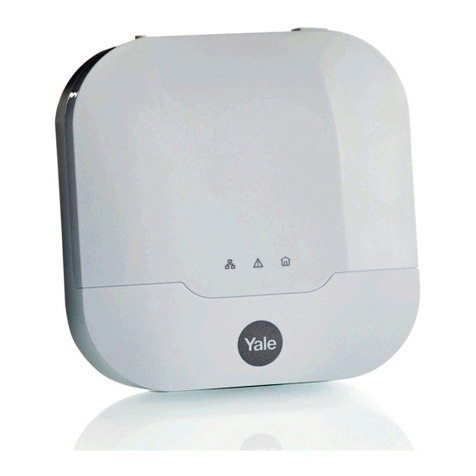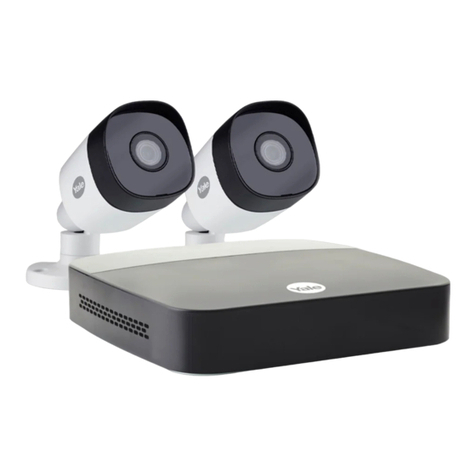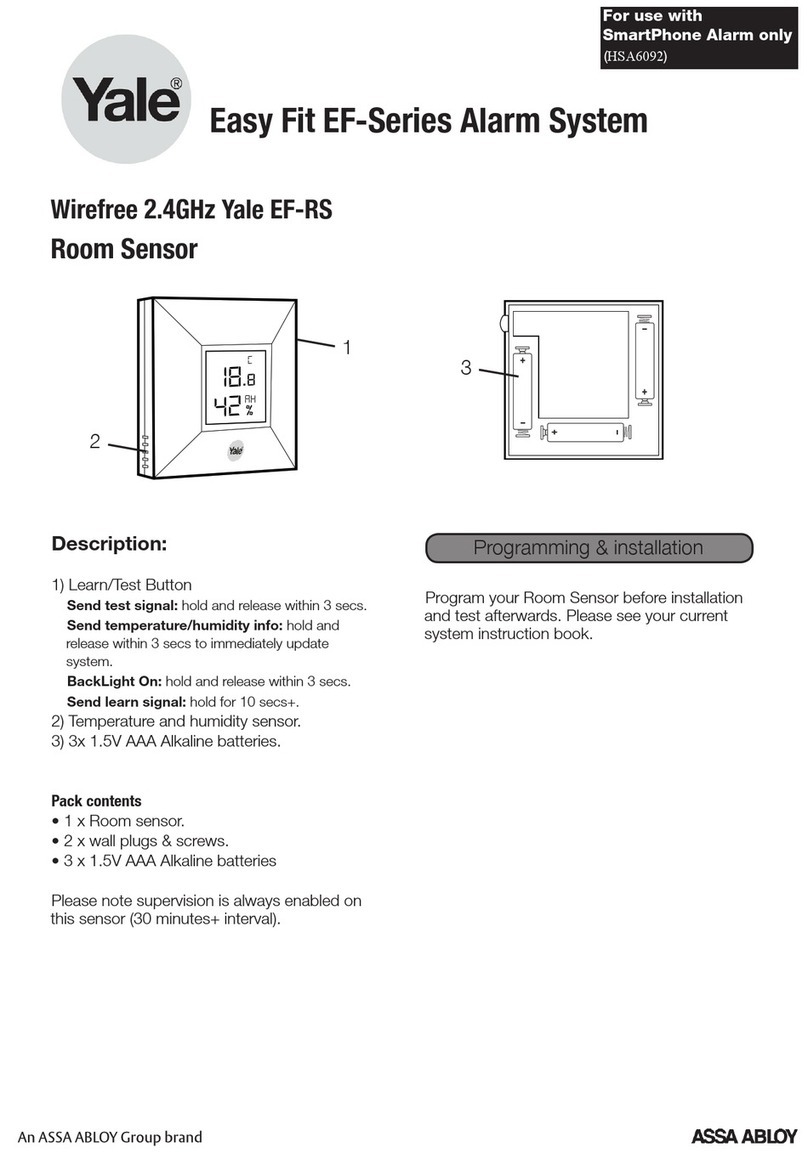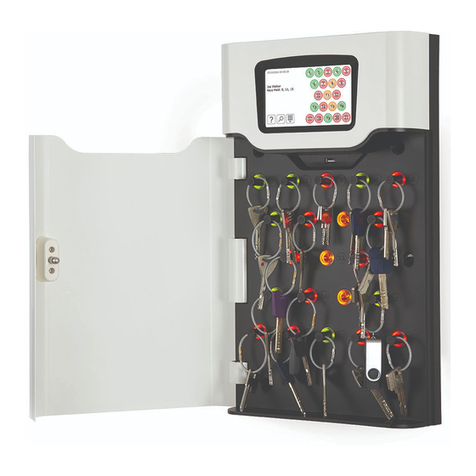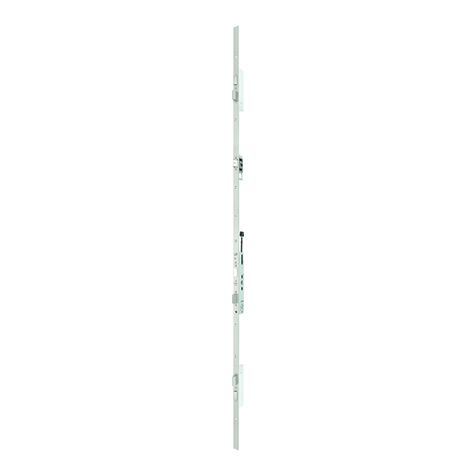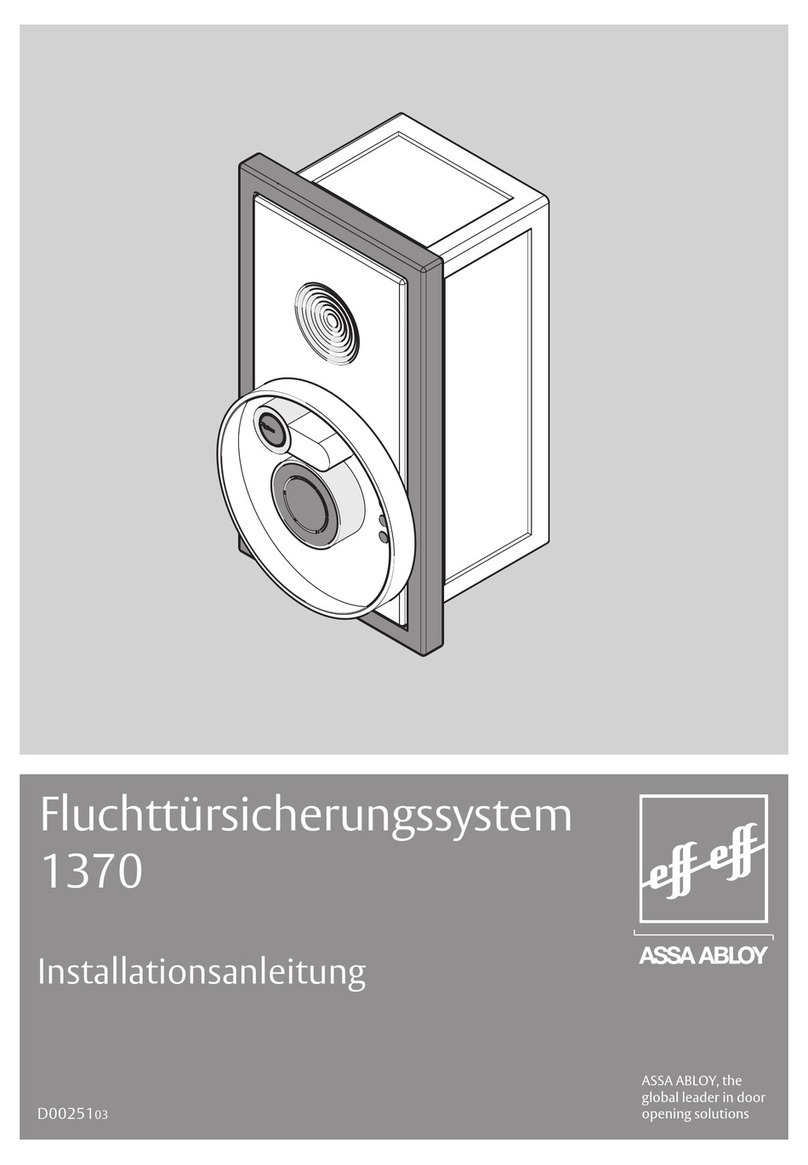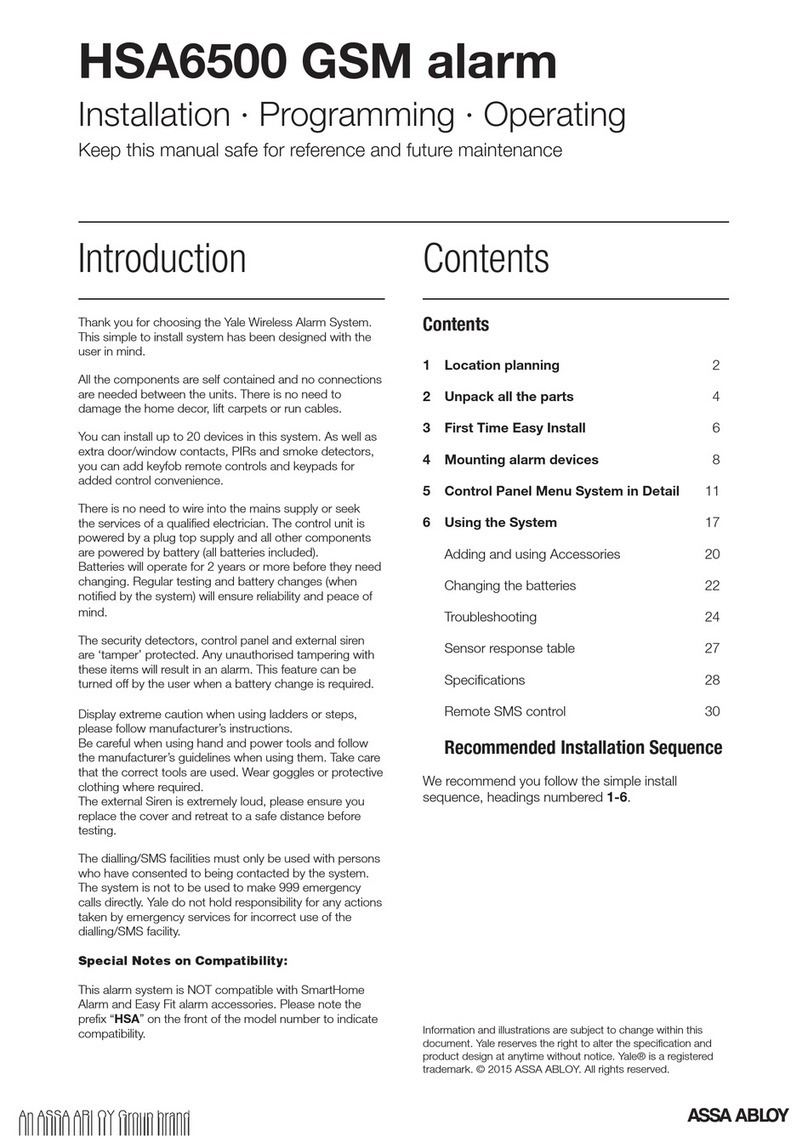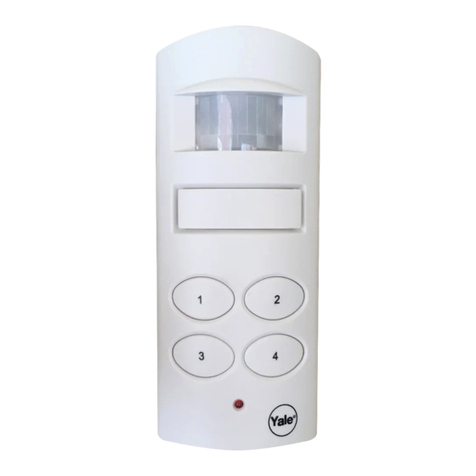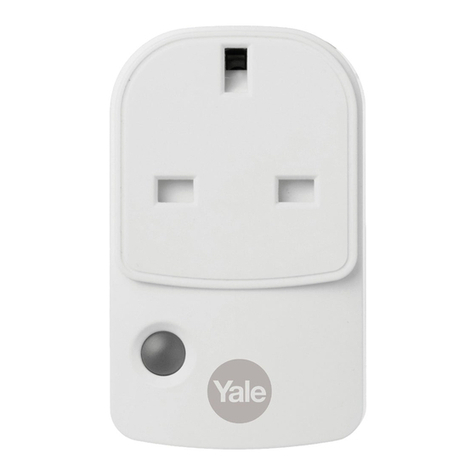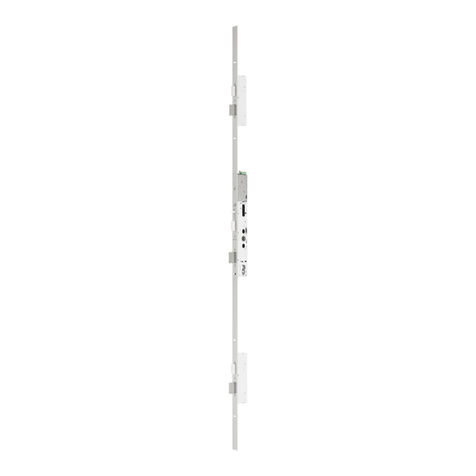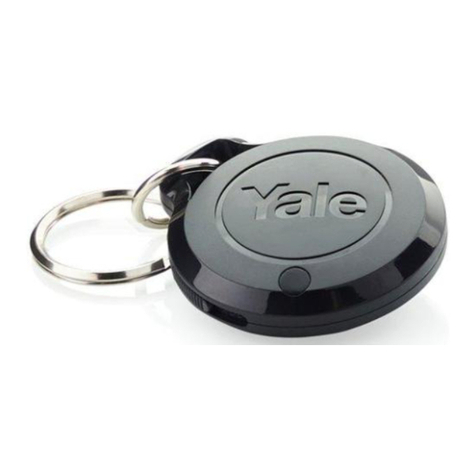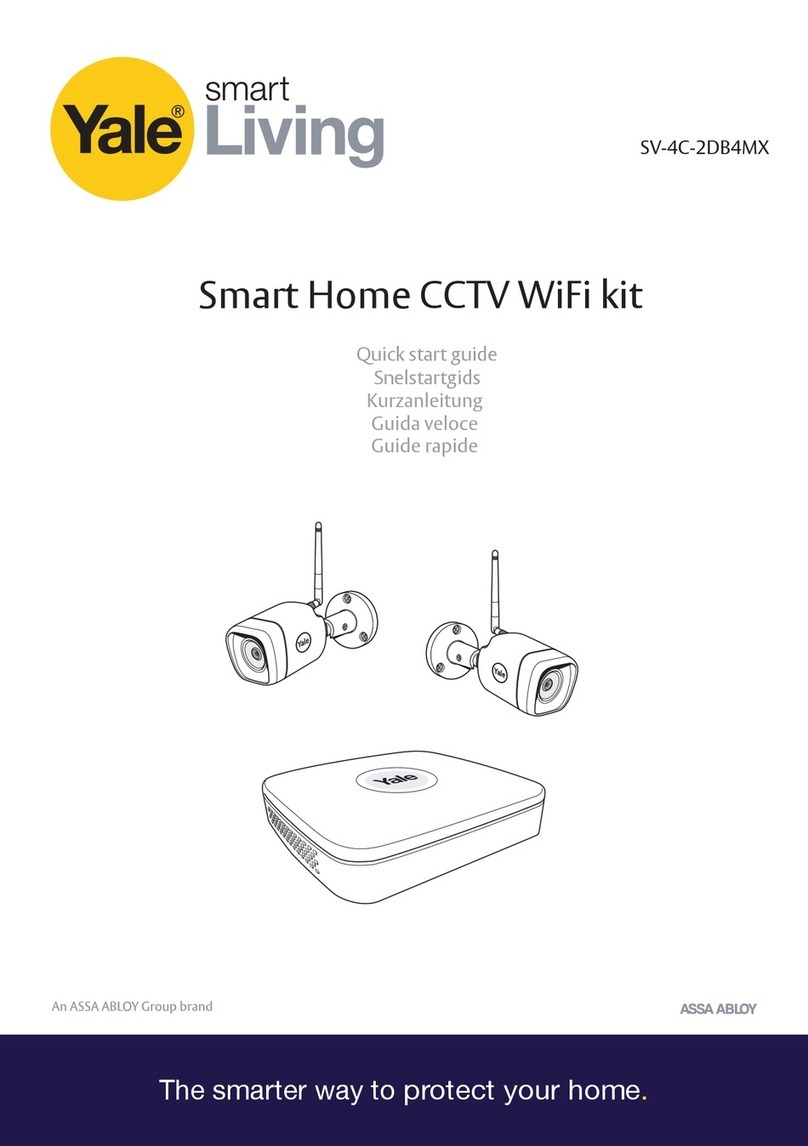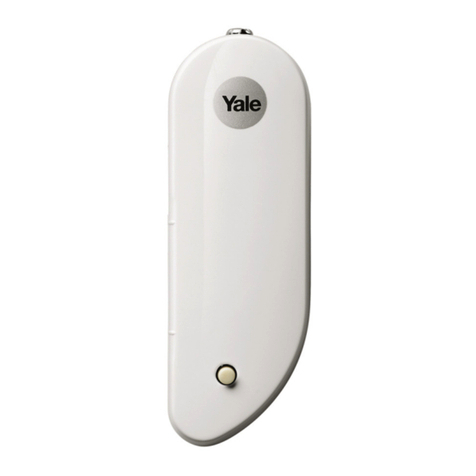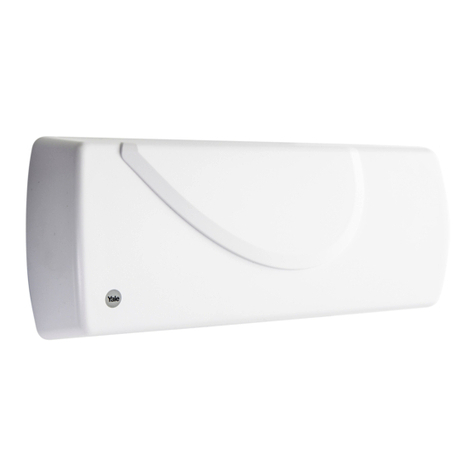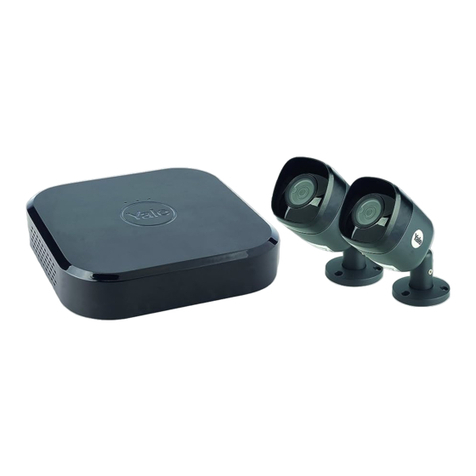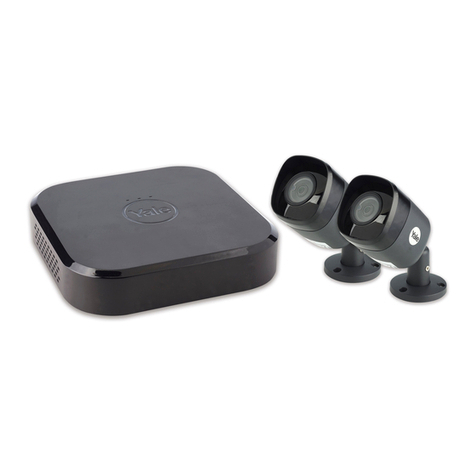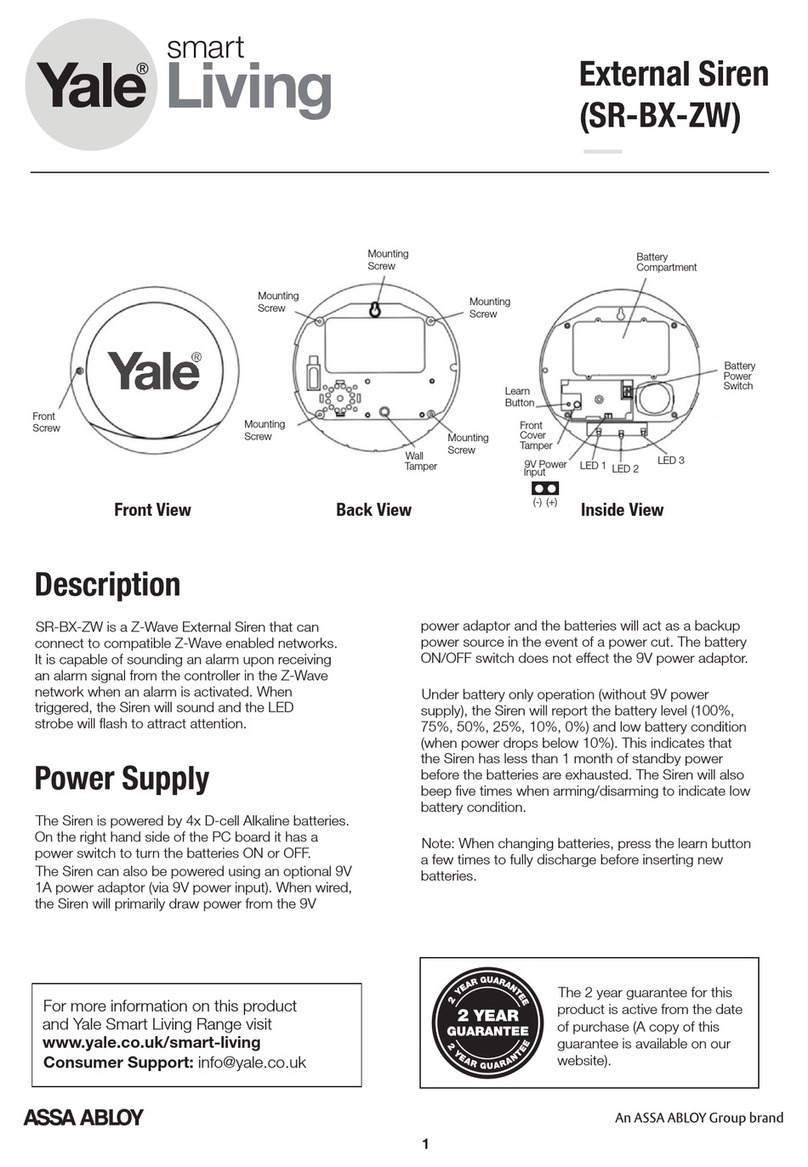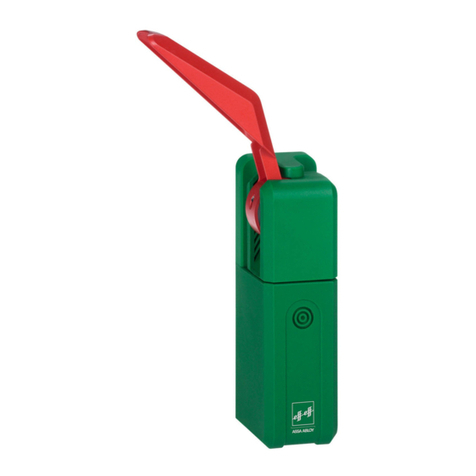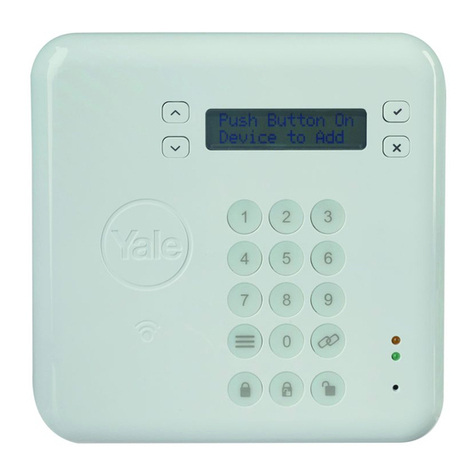
2 of 8
Mounting Hole Drilling
There are three different procedures
depending on the door type.
Hollow Metal Doors employ supplied machine screws
and “blind nut” fasteners. This method leaves the outside
of the door unaffected. Longer machine screws and sex
bolts may be used on hollow or solid wood doors, solid
metal doors, or chalk filled fire doors, the Securitron
TSB-TDM kit for this type of mounting can be ordered
from the factory at no-charge. With this method, the
sex bolt heads do show from the outside of the door.
NOTE: The Securitron Touch Sense Bar may not be used on a fire
rated door that requires a fire rated latch (the Securitron TSB
has no latch), but sometimes fire doors are used on openings
where a fire rated barrier is not required, because the customer
has selected this door type for other reasons (such as solidity).
Another method is to use wood screws (not supplied) on
a solid wood door. By “solid wood”, we mean hardwood
interior rather than pressed wood as the wood needs
enough structural integrity to hold wood screws. This
method is strong and simple and has the advantage of not
showing sex bolts heads from the outside of the door.
HOLLOW METAL DOORS
• DRILL four 3/8" [9.5 mm] diameter holes only
deep enough to get through the inner side of
the door — not completely through the door.
FOR THROUGH BOLT MOUNTING
ON VARIOUS DOOR TYPES
• DRILL four 1/4" [6 mm] holes completely through the
door. For this type of installation (which may also be
elected for a solid wood door) you will be using screws
and finishing sex bolts suitable for a 1-3/4" [44 mm]
thick door supplied in the Securitron TSB-TDM kit.
Nearly all North American commercial doors are this
thickness. If the doors you are working on are different,
you will have to purchase different length screws or
apply some spacing techniques (described later).
FOR A SOLID WOOD DOOR
• You may elect to mount the bar with wood
screws (not furnished). We recommend 2-3/4"
[70 mm)] #14 wood screws with a hex, pan,
oval or round head. DRILL four 3/16" [5 mm]
diameter holes to a depth of 1-1/4" [30 mm].
Drill 23/6 or 3/8"
hole, as shown,
about 3/16" in from
each edge
Diagram 1 Bottom view
of hinge side end piece.
Diagram 2 Rear view of
end piece showing cable
routing through end piece.
“E” Clamp
Elongated Slot
6 Conductor
Jacketed Cable
Cable Connector
which attaches
to circuit board
Stainless door cord
inserts into hole
drilled in bottom of
end piece. Secures
with “E” clamp
“E” clamp
installed to
secure
stainless cord
Wireway Hole Drilling
The Securitron TSB connects to its power source
and to the devices it controls via a six-conductor
cable with push-on connector (supplied). There are
several different methods of getting this cable from
the Securitron TSB to external connection points.
The first issue is whether the cable needs to enter the
door (in which case a wireway hole must be drilled in
the door), or not. For most installations, it is preferred
that the cable enter the door. Exit from the door may
be via the supplied door cord which may be mounted
at the top of the door where it is out of the way, or via
any of many commercially available transfer hinges or
pivots (such as Securitron EPT Electric Power Transfer
or Securitron ELH Electric Hinge) which serve to route
the wiring off the door in a concealed manner. A
wireway hole is then drilled into the door in the position
shown on the template. It should be 3/8" [9.5 mm] in
diameter. The cable is then pulled into the door.
An alternate technique exists which does not route
the cable into the door but which takes it directly
from the end piece to the frame via the door cord.
This technique is preferred when the door type is
difficult to pull a wire through (such as any solid door). It
is also a good technique when the frame is not hollow as
the door cord can route the cable directly from the end
piece to a surface box mounted opposite the end piece.
For the best security and appearance, you will
not use the plastic door cord terminator when you
route the cord into the end piece. You will drill a hole
in the plastic end piece. The hole should be drilled
through the bottom flat of the end piece on the hinge
side. The ideal hole size is 23/64" (9.1 mm) but as
this drill size is unusual, 3/8" (9.5 mm) also works.
NOTE: Diagram 1 shows the end piece you would select if
the hinge side of the door was on the left. If it’s on the right,
use the other end piece but still locate the hole at the inner,
rear corner. With this method, the door cord is used to
route the cable directly from the end piece to the frame.
Wire Routing
If you elect the method of wire routing which uses
a hole in the end piece (see Diagram 2), you must
route your cable through the end piece prior to
mounting the end piece to the door. This is because
the flat cable connector will not pass through
the hole you have drilled in the end piece.
1 THREAD the cable end without the connector
down through the elongated slot in the end piece
(the slot is directly under the circuit board).
2 ROUTE it through the drilled hole in the elongated
slot in the end piece so that it exits the end piece.
3 PASS the stainless door cord over the cable
and slide it until you can push it into the
hole you have drilled in the end piece.
4 SECURE the stainless cord inside the end piece
with the supplied ”E” clamp. See Diagram 2.
It shows this assembly for the end piece
you would use for a door with hinges to the
left. If the hinges are on the right, use the
opposite end piece. The drawing will be
“reversed” but the concept is unchanged.
NOTES: if you are mounting to a surface box,
a second “E” clamp has been supplied so that
you can simply drill a hole in the box and secure
the stainless cord from the inside with the
second “E” clamp. If the frame is hollow, you would
employ the plastic door cord terminator when you
mount the other end of the door cord to the frame.
You are now ready to mount the bar to the door.
